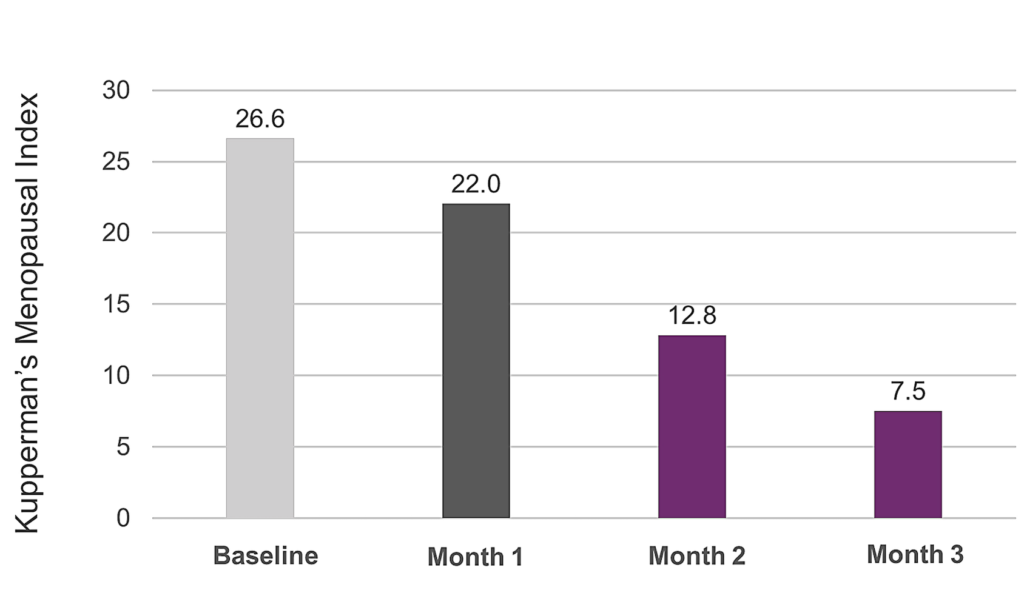
Maca (Lepidium) is a genus of cruciferous root vegetables representing 249 known species of plants native to the Andes mountains of Peru and Bolivia. Various types of maca have been used as both food and medicine by indigenous peoples of that region for thousands of years.
Maca belongs to the same Brassicaceae family as turnips, broccoli, watercress and cabbage. But because it grows at 4,000-4,500 meters above sea level, it is subject to a very different combination of environmental stressors than its botanical cousins growing at lower altitudes. These intense xenohormetic exposures to altitude, sunlight, and varying moisture conditions create maca’s complex therapeutic phytochemical profile.
Traditionally, Andean peoples have used maca as medicine for energy, fertility, hormone balance, healthy thyroid function, improved sexual function, premenstrual syndrome (PMS), menopausal symptoms, bone health, and as a vitality tonic for aging (Gonzales, GF, et al. Evid Based Complement Altern Med, 2012).
In Western botanical medicine, maca is regarded as an adaptogen. Adaptogenic herbs are unique in their ability to balance endocrine hormones, regulate the immune system, and help the body maintain optimal homeostasis. Adaptogens have a normalizing effect: they can tone down the activity of hyper-functioning systems or strengthen the activity of hypo-functioning systems (Panossian, AG, et al. Med Res Rev, 2021).
Phytochemical analysis by Henry Meissner at the Charles Sturt University, Sydney, Australia, suggest that maca’s mechanisms of action on human physiology are quite unique, and go beyond that of other traditional adaptogenic herbs (Meissner H, et al. Int J Biomed Sci. 2006).
In some manner, maca promotes optimal function of the hypothalamus and the pituitary gland, to improve the overall communication of the endocrine system. That observation goes back more than 60 years, to the work of Dr. Gloria Chacon-Roldan at the Universidad Nacional Mayor de San Marcos, Lima. Dr. Chacon showed that alkaloids in maca acted on the hypothalamus-pituitary axis, an observation that explains why maca has more than just adrenal effects.
Though maca does affect sex hormone balance, it does not contain phytoestrogens like the isoflavones found in soy and red clover.
A Nutritional Powerhouse
Maca has become popular worldwide over the last decade. Dozens of companies now promote maca-based products as “superfoods.” There is surely some hype in the marketing claims, but there’s also some truth. Maca is quite nutrient-dense.
Its nutrient composition includes carbohydrates, fiber, amino acids, fatty acids, minerals (iron, zinc, iodine, calcium, copper, magnesium, and potassium) and vitamins (A, B2, B6, and niacin (da Silva Leitão Peres, N., et al., Food Funct, 2020. Meissner HO, et al. Int J Biomed Sci, 2016).
Secondary metabolites include alkaloids, thiohydantoins, macamides, macaenes, glucosinolates, and macapyrrolins, as well as anthocyanins, isothiocyanates, imidazoles, polyphenols, lignans, and flavonoids. These secondary metabolites are presumed to be responsible for many of the purported therapeutic benefits of maca.
Maca promotes optimal function of the hypothalamus and the pituitary gland, to improve the overall communication of the endocrine system. That observation goes back more than 60 years, to the work of Dr. Gloria Chacon-Roldan at the Universidad Nacional Mayor de San Marcos, Lima.
Notably, there are nine different glucosinolates in maca. According to medicinal plant researchers Dominik Tarabasz and colleagues at the University of Lublin, this class of compounds may be potentially beneficial in preventing memory-loss conditions (Tarabasz D, et al. Int J Mol Sci. 2022).

Certain phenotypes of maca, “may present a valuable plant material to be considered for the development of therapeutic products with memory-stimulating properties,” writes Tarabasz. Further study of maca glucosynolates could lead to “therapeutic products for treating medical conditions related to memory impairment.”
Maca also contains sterols such as stigmasterol and brassicasterol, which are structurally and biochemically related to cholesterol and steroid hormones such as estrogen, testosterone, and progesterone (Gonzales GF, et al. Evid Based Complement Altern Med, 2012). These hormone-like compounds may contribute to the body’s own hormone production (Meissner, HO, et al., Int J Biomed Sci, 2005).
Phenotype & Function
Most companies selling maca-based products represent them with the simple catch-all term “maca.” This overlooks the fact that there are many species which are distinct from each other in both appearance and phytochemical profiles.
The two most commonly encountered species are: Lepidium meyenii Walpers, the wild form of Peruvian maca, named for 19th century German botanist Wilhelm Gerhard Walpers, who first collected and described the plant in European scientific terms; and Lepidium peruvianium Chacon, named after Gloria Chacon-Roldan, who posited that this species is the cultivated form that has its origin among the ancient Incas.
The majority of maca “superfoods” and supplements consist of random, undifferentiated combinations of different phenotypes mixed together. This means there can be substantial variations in the phytochemicals they provide. While generic mixtures may suffice to deliver on the energy benefits of maca, they might not work as well for more specific health applications.
Though many botanists, herbalists, and regulatory agencies consider L. meyenii and L. peruvianum to be synonymous, Meissner’s analysis of the plants via liquid chromatography and mass spectroscopy suggest that this is an error, and that the species are not the same (Meissner, HO. Int J Biomed Sci, 2015).
Research over the last two decades indicates that there are, in fact, up to thirteen different phenotypes of maca, each with its own variations in gene expression, color, and bioactive constituents. These variations correlate with location of cultivation (Huang YJ, et al. Nat Prod Bioprospect, 2018).
Elevation, soil quality, and climate all impact phenotypic expression and phytochemical content of maca. For example, maca grown in China is often distinctly different from native Peruvian maca. Even within Peru, there are differences between the same species sourced from the two primary locations where it is grown.
Altitude affects the color of the maca hypocotyl—the tuberous starchy root, which is the primary part used for food and medicine. The predominant colors are purple, red, black, white, gray, and yellow. Maca plants grown at higher altitudes typically have red and purple hypocotyls, and this correlates with correspondingly higher concentrations of beneficial phytochemicals like glucosinolates, not found in roots of other colors (Meissner, HO, et al. Int J Biomed Sci, 2017).
Interestingly, although not entirely surprisingly given what we know about phytochemicals, the different phenotypes have diverse physiological effects and gender affinities (Geng, P, et al. Planta Med, 2020). They’re not all the same, and if we are seeking specific health benefits, we need to pay attention to the specific type and color of the maca we use.
For example, Gonzales and colleagues showed that black maca supports spermatogenesis in rats. In particular, the polyphenols and flavonoids from this subtype increased stages of spermiation (VII-VIII) and mitosis of germ cells (IX-XI). When co-administered with extract of Camu-Camu fruit (Myrciaria dubia)—another polyphenol-rich Amazonian plant—black maca increased mitosis, meiosis and spermiation (Gonzales GF, et al. Toxicol Mech Methods. 2013).
In their thorough review comparing black, yellow, and red maca, Gonzales’ team notes that “Black maca shows the best results on spermatogenesis, memory and fatigue, while red maca is the variety that reverses the benign prostatic hyperplasia and experimentally induced osteoporosis.” (Gonzales GF, et al. Rev Peru Med Exp Salud Publ. 2014).
Earlier this year, a study of 44 elite athletes representing a range of different sports (shooting, racket sports, swimming) showed that twice-daily supplementation with 2,500 mg of 100% concentrated black maca extract for eight weeks decreased inflammation, enhanced mitochondrial biogenesis, and improved physical fitness and performance (Lee F, et al. Nutrients. 2023).
For women, yellow maca–especially in a mix with other phenotypes–is beneficial for hormone balance in both the perimenopausal and early postmenopausal stages (Meissner HO, et al. Int J Biomed Sci, 2006. Meissner, HO, et al. Int J Biomed Sci, 2005. Meissner, HO, et al. Int J Biomed Sci, 2017. Meissner, HO, et al. Int J Biomed Sci, 2006. Meissner HO, et al. Int J Biomed Sci, 2006).
Meissner has shown that different maca phenotypes differ in the ways they modulate hypothalamic-pituitary-ovarian axis via their influence on estrogen, progesterone, follicle stimulating hormone, and luteinizing hormone.
In addition to its endocrine effects, maca may also regulate glucose levels, and lower blood pressure, leading to overall improvements in health (Gonzales GF, et al. Rev Peru Med Exp Salud Publ. 2014)
The majority of maca superfood powders and supplements consist of random, undifferentiated combinations of different phenotypes mixed together in the ratios in which the tubers were harvested. This means there can be substantial variations in the relative proportions of the phenotypes, and therefore, variations in the phytochemicals they provide.
While generic mixtures may suffice to deliver on the energy benefits of maca, they might not work as well to support other more specific health applications. In many clinical situations, the choice of phenotype really does matter.
Glucosinolate Profiles
There is no single category of phytochemicals that can account for all of the diverse health benefits of maca. But one class in particular—the glucosinolates—merits special consideration. They appear to be among the most physiologically active compounds in maca (Perez CJ, et al. J Mass Spectrom, 2021).
Glucosinolates are sulfur- and nitrogen-containing compounds, and they are what give cruciferous vegetables like cabbage, mustard, broccoli, Brussels sprouts, radishes, and horseradish their distinctive bitterness. Roughly 120 distinct glucosinolates have now been identified.
According to Fahey and colleagues, glucosinolates and their metabolites have anti-fungal, anti-microbial, and chemoprotective effects. They play a role in the metabolic detoxification of hormones and environmental toxins (Minich DM, Bland JS. Nutr Rev, 2007. Higdon JV, et al. Pharmacol Res, 2007). Therefore, they may be pivotal in reducing cancer risk (Na, G., et al. Int J Mol Sci, 2023).
The glucosinolates in maca are different than those produced by other crucifers. The highest glucosinolate levels are found in maca seeds, fresh maca hypocotyls, and sprouts (Li G, et al. Economic Botany, 2001).
Among the predominant maca glucosinolates are the aromatic glucosinolates, notably benzyl glucosinolate, also called glucotropaeolin (Piacente S, et al. J Agric Food Chem, 2002). Recent research suggests that certain glucosinolates have acetylcholinesterase activity, implying that they may have beneficial effects on cognition and memory (Tarabasz D, et al. Int J Mol Sci. 2022).
The glucosinolates in maca are different than those produced by other crucifers. Certain glucosinolates have acetylcholinesterase activity, implying that they may have beneficial effects on cognition and memory.
Research on maca phytochemicals continues, with some recent studies looking at the immunomodulatory and neuroprotective effects of polysaccharides from maca (Cao F, et al. Heliyon. 2023. Zhou Y, et al. Front Biosci. 2022). Another recent report suggests that a maca-derived fatty amide known as N-benzylhexadecanamide may enhance testosterone production (Zhang KY, et al. Molecules. 2023).
Maca also produces a unique class of more than 30 compounds collectively called macamides which may contribute to the anti-fatigue effects long attributed to this genus of plants (Liu T, et al. Molecules. 2023).
Maca & Menopause
According to a 2015 paper published by the Agency for Healthcare Research and Quality (AHRQ), which encompased nearly 300 studies, up to 85% of peri- and post-menopausal women experience symptoms including hot flashes, night sweats, sleep disturbances, mood imbalances, loss of libido, weight gain, and vaginal dryness.
These women are seeking solutions that will help them regain their quality of life but may have hesitations about hormone replacement therapy (HRT)—the most common option offered by conventionally-trained physicians. In the 21 years since publication of the Women’s Health Initiative data underscoring the potential risks of HRT, womens’ concerns about contraindications and possible side-effects have precluded many from accepting pharmaceutical approaches.
Leading medical organizations like the North American Menopause Society (NAMS) have responded to these concerns by advising clinicians to prescribe only the lowest effective dose (HRT) and to individualize treatment.
That’s a positive step, but many women remain hesitant to go on HRT.

Maca represents one potential adjunct or alternative to HRT. A proprietary standardized combination of specific maca phenotypes called Maca-GO® (known commercially as Femmenessence®) has been clinically tested in perimenopausal and early postmenopausal women, and the data strongly indicate a beneficial effect.
Four clinical trials have been published on this proprietary phenotype combination, looking at its effects on effects on hormones, symptom relief, bone density, and cardiovascular parameters. Maca-GO is the only maca product with published clinical trials demonstrating statistically significant effects on hormones in perimenopausal (N=18) and early postmenopausal (N=177) women.
Over 3-4 months, compared with placebo, intervention with Maca-GO resulted in increases in estradiol, progesterone, and decreases in FSH and LH. This was associated with beneficial impacts on bone density and blood lipids, specifically increased HDL, and decreases in LDL and triglycerides.
The maca supplement also produced a statistically significant 84% reduction in menopausal symptoms, as indicated by changes on the Kupperman’s Menopausal Index (see Fig. 1) and Greene’s Menopausal scale.
Maca represents one potential adjunct or alternative to HRT. A proprietary standardized combination of specific maca phenotypes called Maca-GO® has been clinically tested in perimenopausal and early postmenopausal women, and the data strongly indicate a benefit.
In 2021, one of us (Kim Ross) published an interesting case report of a 32-year-old Caucasian woman who experienced vasomotor symptoms, anxiety and mood changes following a hysterectomy and oophorectomy. A personalized nutrition and lifestyle program that included twice-daily supplementation with Maca-GOresulted in significant improvements and resolution of these. This case was presented at the Institute for Functional Medicine’s 2023 Annual International Conference in June 2023.
Maca Contraindications
Women with polycystic ovary syndrome (PCOS) and those who show strong estrogen dominance need to be careful with maca—especially with products that contain random mixtures of different maca phenotypes. The adrenal stimulation can exacerbate their conditions.
For example, black maca, which can help with sperm health and libido in men, may worsen PCOS symptoms in women with PCOS, as was shown in a 2011 case report (Srikugan L, et al. BMJ Case Rep, 2011).
That said, Maca-GO, which nourishes the hypothalamic-pituitary-thyroid-adrenal-ovarian (HPTAO) axis, can be used to support women with these conditions when used at the correct dose. However, it is not recommended for women taking hormone-suppressing medications such as Tamoxifen. Likewise, it may not be appropriate for pregnant or breast-feeding women.
Maca, with its various phenotypes, can be a valuable ally in optimizing hormone production in women and men, especially when used in the context of comprehensive lifestyle interventions that include personalized diet plans, support for gut health and detoxification, stress management, and sleep hygiene. But keep in mind that the diverse phenotypes of maca are quite distinct, and it is important to select maca products carefully.
Deanna Minich, MS, PhD, CNS, IFMCP, is a nutrition scientist, international lecturer, teacher, and author, with over twenty years of experience in academia and in the food and dietary supplement industries. She is the author of six consumer books on wellness topics, four book chapters, and fifty scientific publications. Her academic background is in nutrition science, including a Master of Science in Human Nutrition and Dietetics from the University of Illinois at Chicago (1995), and a Doctorate in Medical Sciences (nutrition focus) from the University of Groningen in the Netherlands (1999). For a decade, she was part of the research team led by the “father of Functional Medicine,” Jeffrey Bland, PhD, and has served on the Nutrition Advisory Board for The Institute of Functional Medicine. Dr. Minich is Chief Science Officer at Symphony Natural Health.
Kim Ross, DCN, MS, MBA, CNS, IFMCP, has over 16 years of experience in the nutrition industry including multiple roles in the dietary supplement industry, a clinical practice focused on women’s health, the development of professional training programs, and in academia. Her academic background includes a Master of Business Administration from Utica University, a Master of Science in Applied Clinical Nutrition from Northeast College of Health Sciences, and a Doctorate in Clinical Nutrition from Maryland University of Integrative Health. Dr. Ross is the Director of Scientific Communication at Symphony Natural Health.
END







